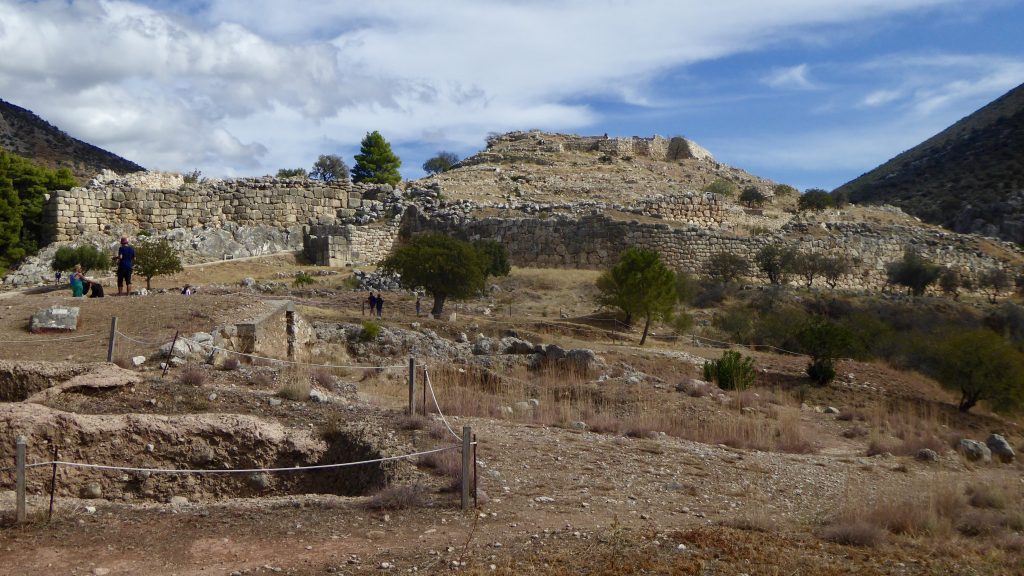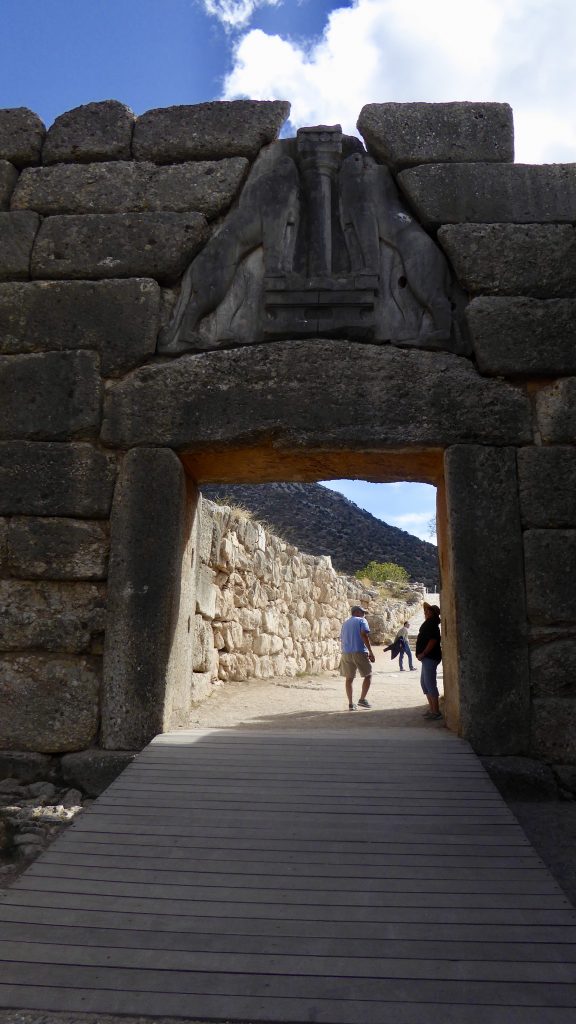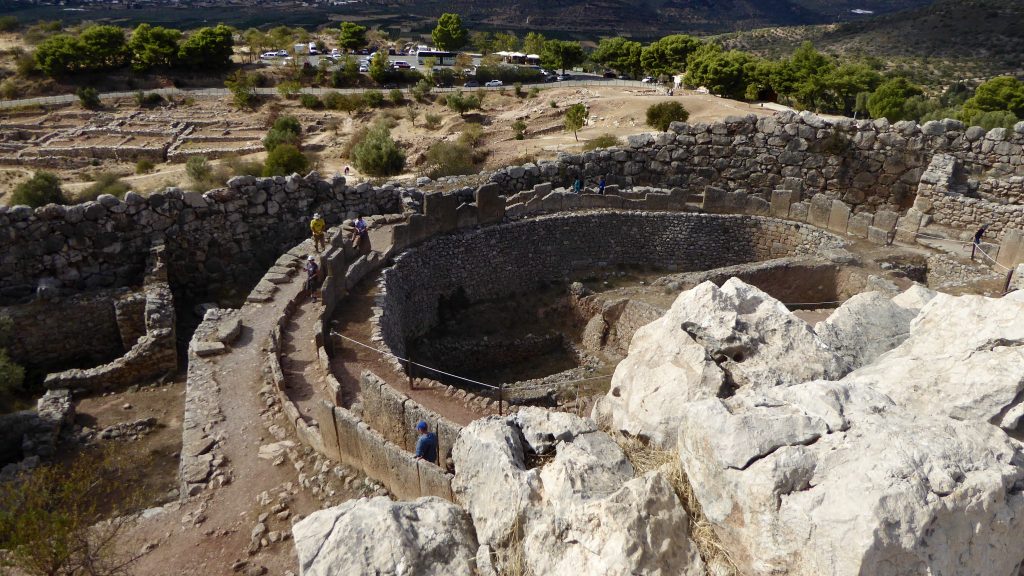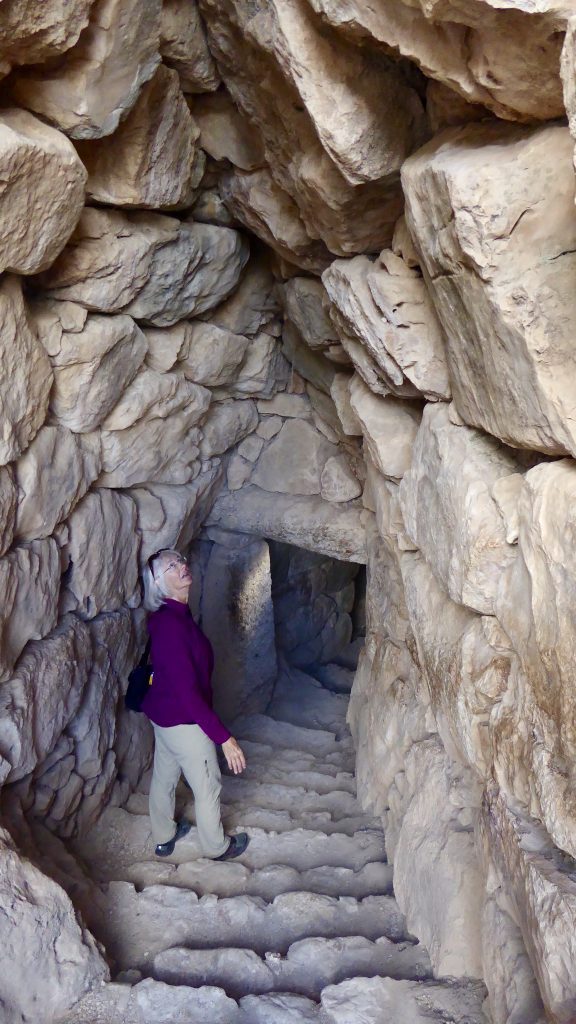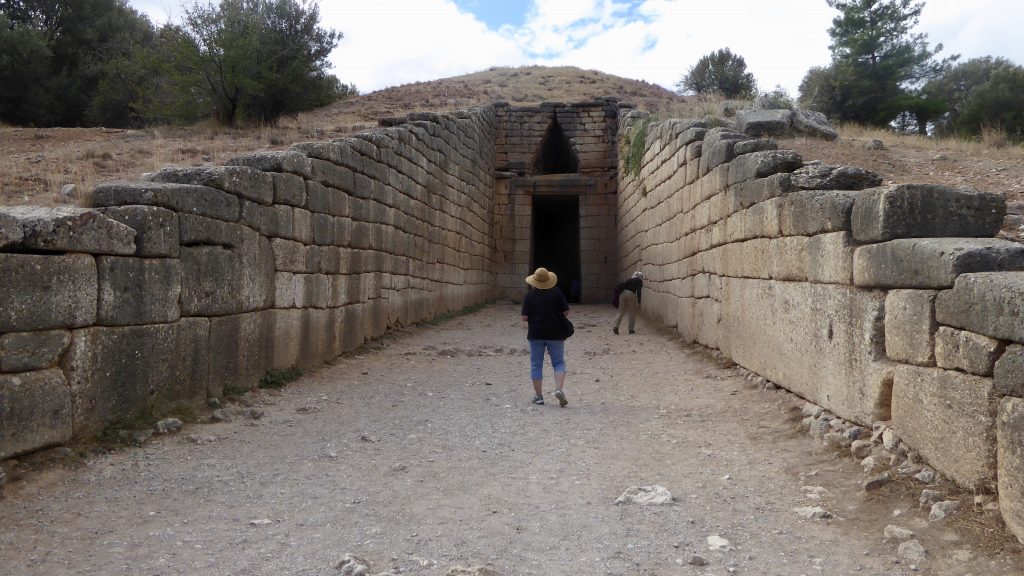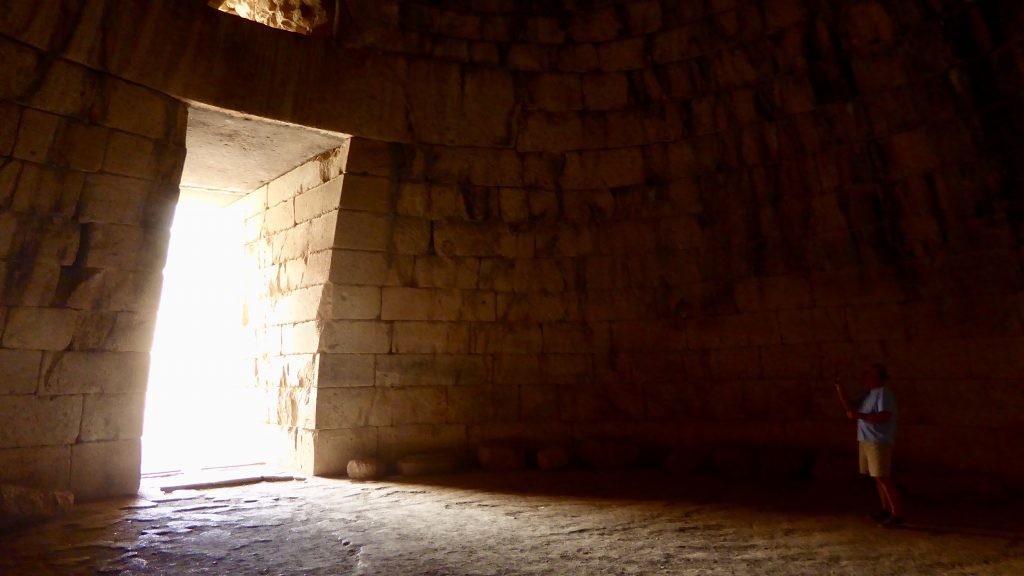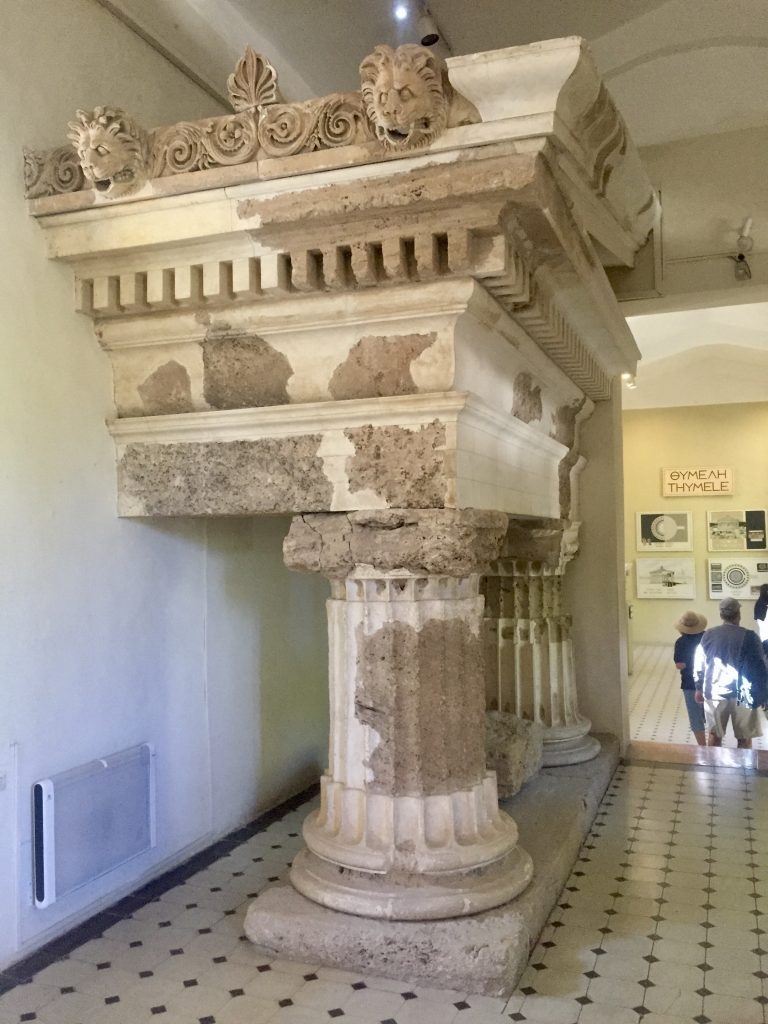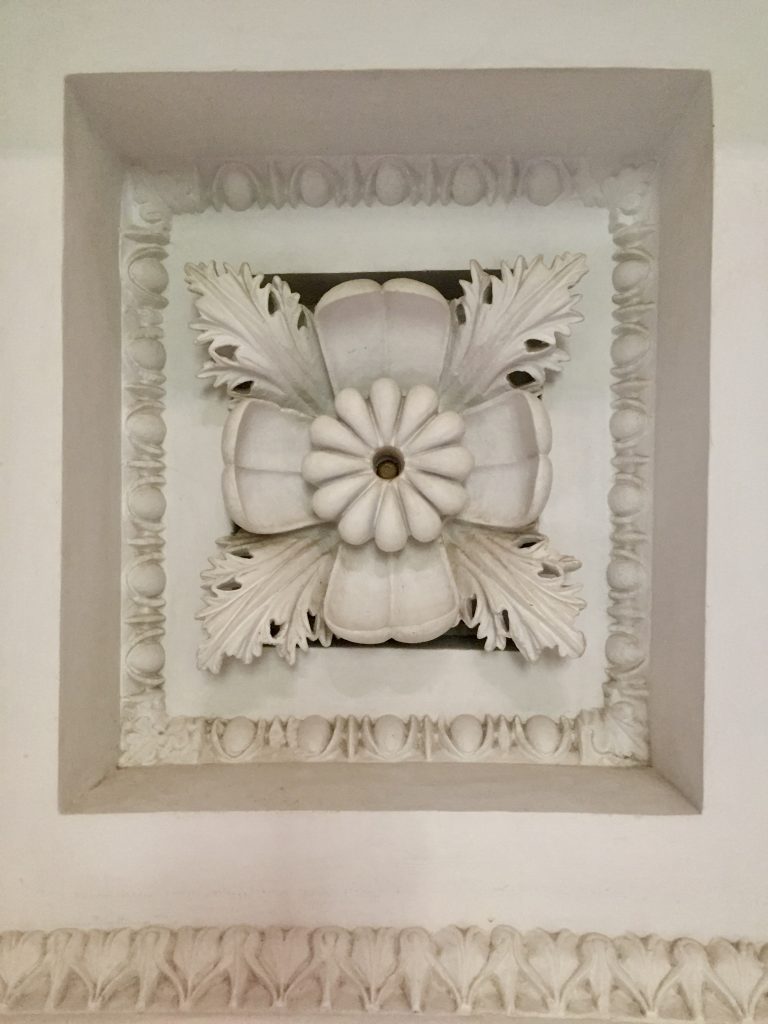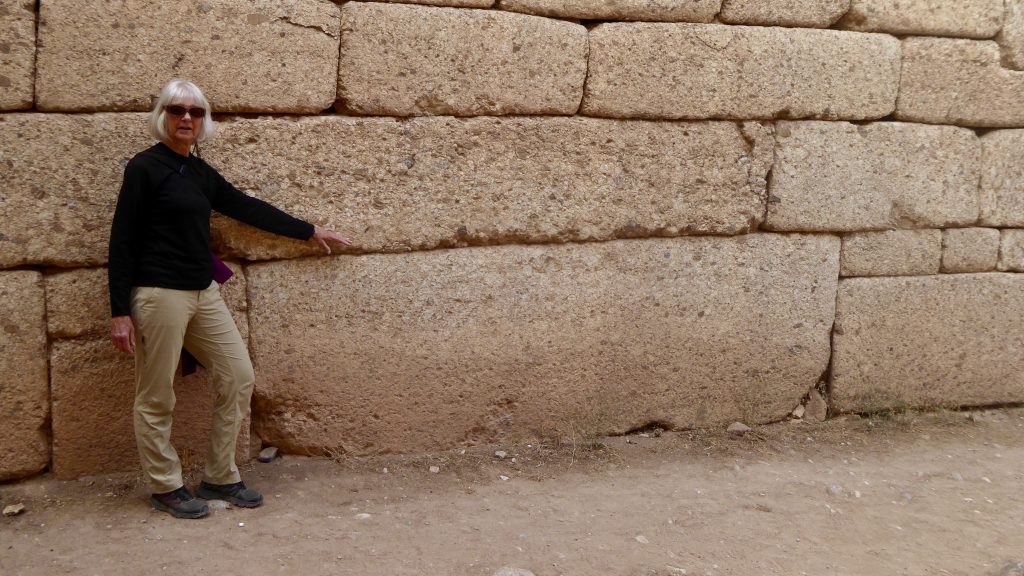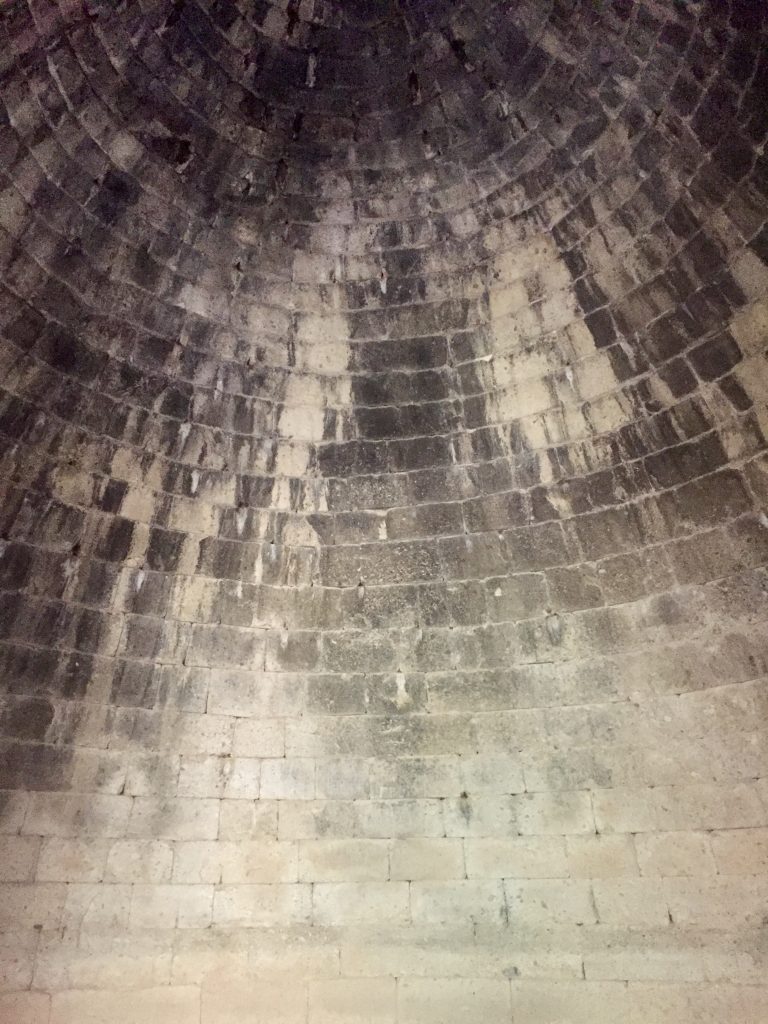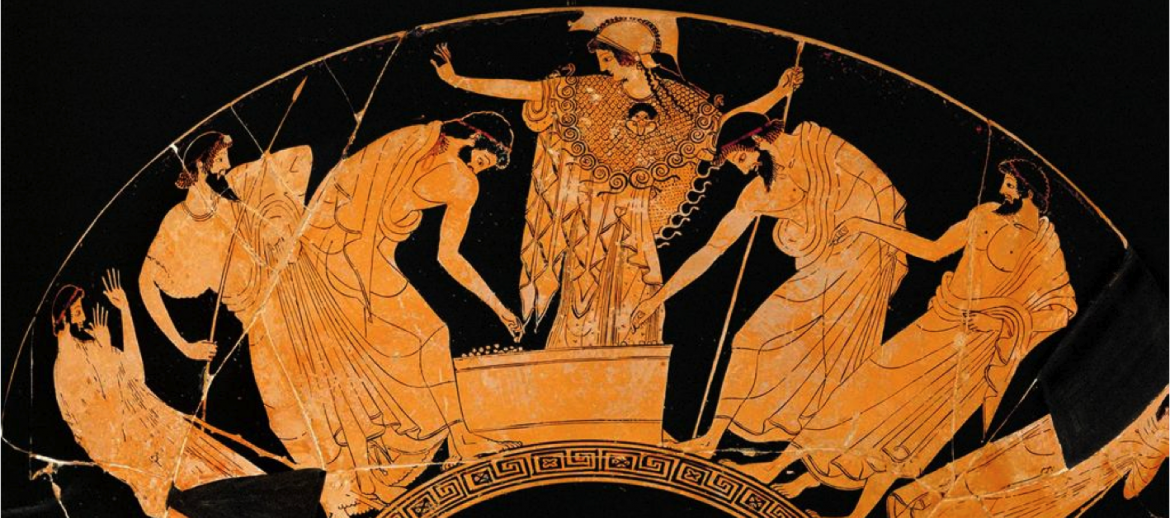A pleasant drive through the mountains from Monemvasia brought us to the port city of Nafplio on the upper western coast of the Argolid peninsula. Nafplio is a largely modern city with an Old Town section that surrounds the port and a magnificent fortress (Palamidi) high on a hill over the harbor.
Our first full day of exploration found us in the archaeological sites of Epidavros in the morning and Mycenae in the afternoon, with a quick stop at a non-descript taverna for lunch in between.
Epidavros
Epidavros was the major healing center of Ancient Greece and was reputedly the birthplace of Apollo’s son, a healer. The site is extensive and interesting, but the main attraction is the magnificent 16,000 set theater with acoustics so perfect that words spoken from the center of the arena can be heard at the top of the theater. We confirmed this, as did several dozen other visitors. The theater is still in use today.
Epidavros also held an Olympic-style athletic competition, the Festival of Asklepios, every four years in the stadium on the grounds.
Here are some photos.
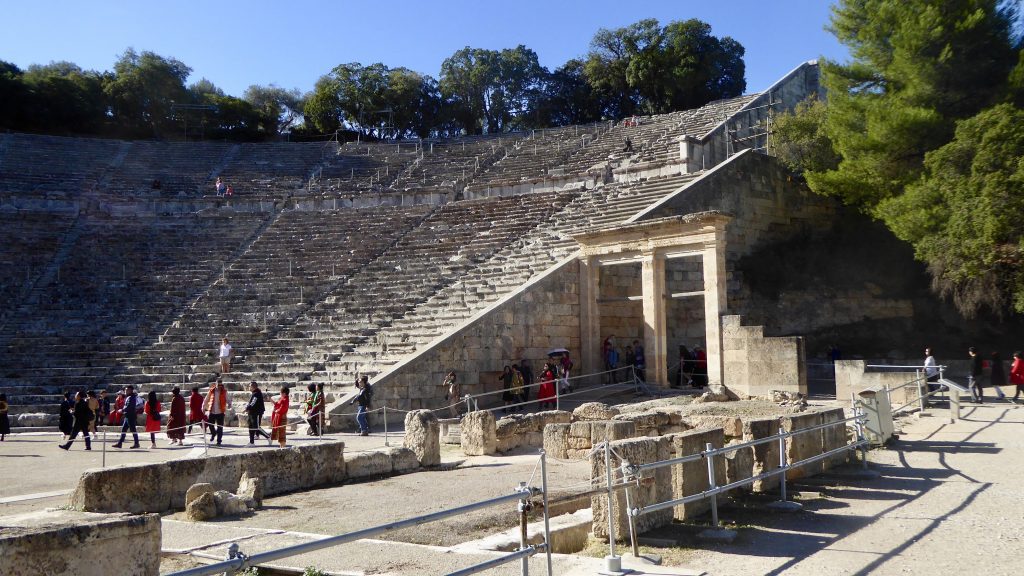
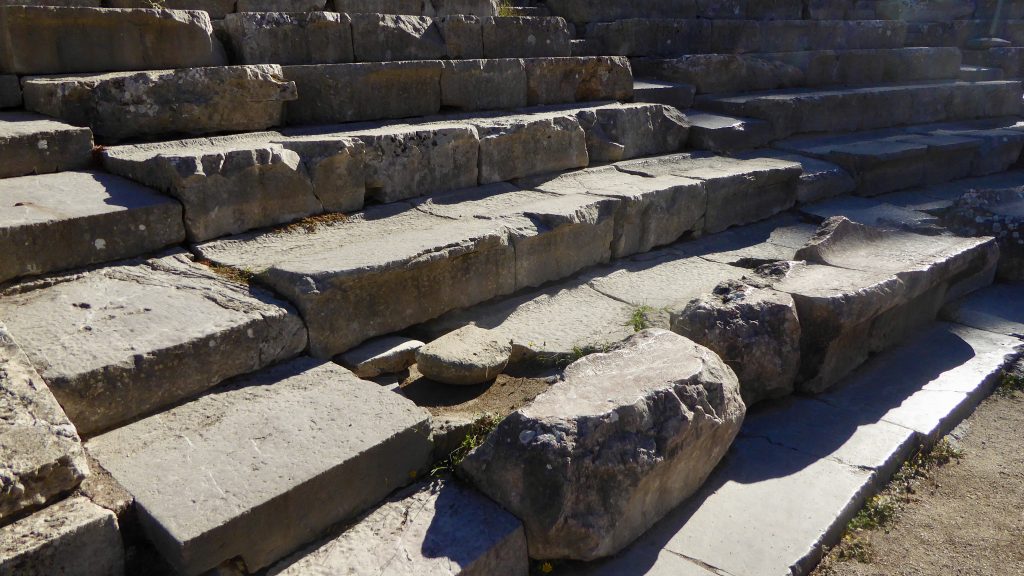
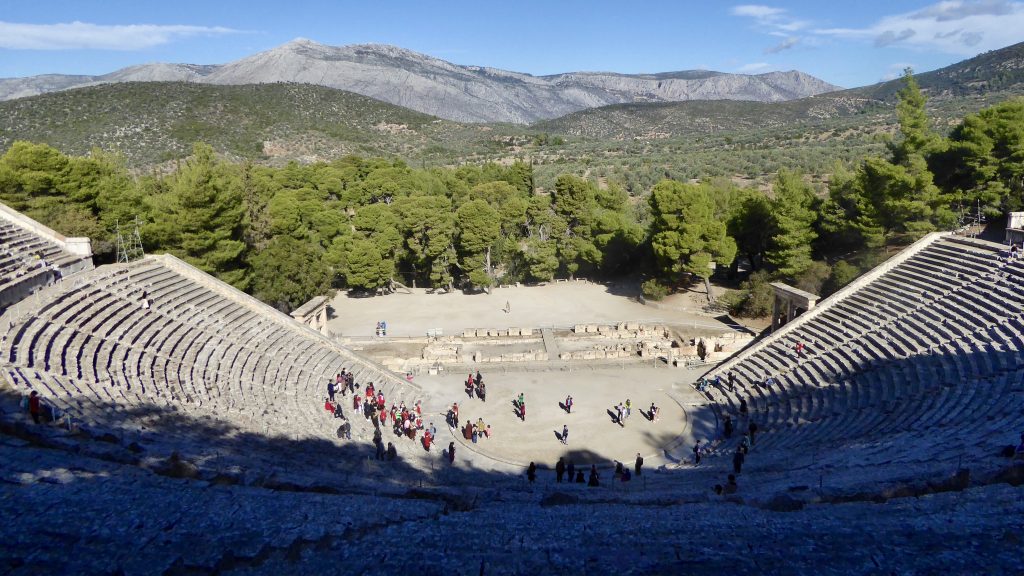
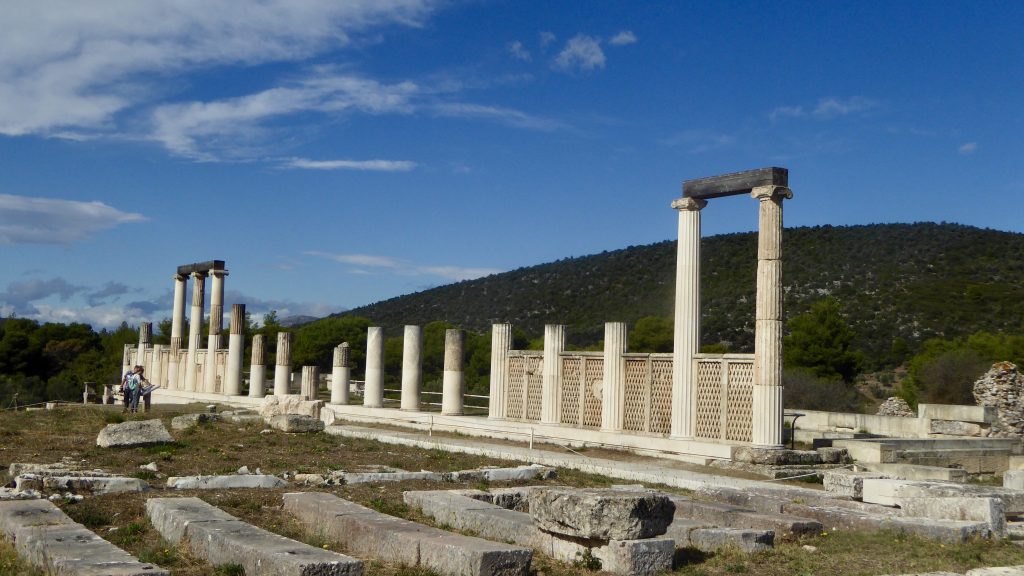
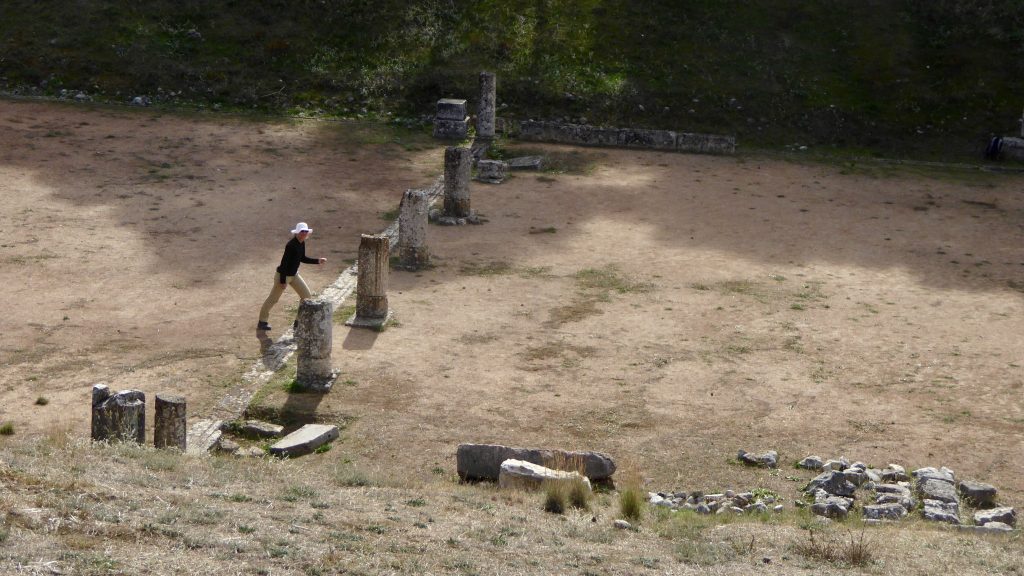
Mycenae
The Mycenaens were seafarers with extensive trade routes all over the Mediterranean and as far away as Scandinavia. In many cultural and artistic senses, Mycenaen culture was the basis of Classical Greek culture. The Mycenaens seem to have disappeared from history, but their influences still remain.
The archaeological site of Mycenae features a fortified citadel and a massive burial chamber of Atreus among other elements. The stonework is incredible—massive boulders of conglomerate material fitted together so precisely that no mortar was needed and a slip of paper would not fit between the stones. The site, in particular the burial chamber of Atreus and the incredible cistern, is also known for the construction technique of corbelling, an overlapping arrangement of stones in which each course extends farther out from the vertical of the wall than the course below. Think igloo and you’ll get the picture.
And it was at this site that we learned of the birth of our granddaughter Ingrid Opal Via. So it’s now our favorite place on the planet.
Here are a few photos.
